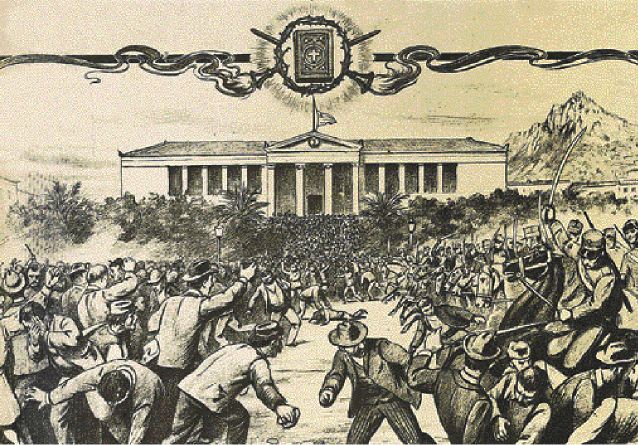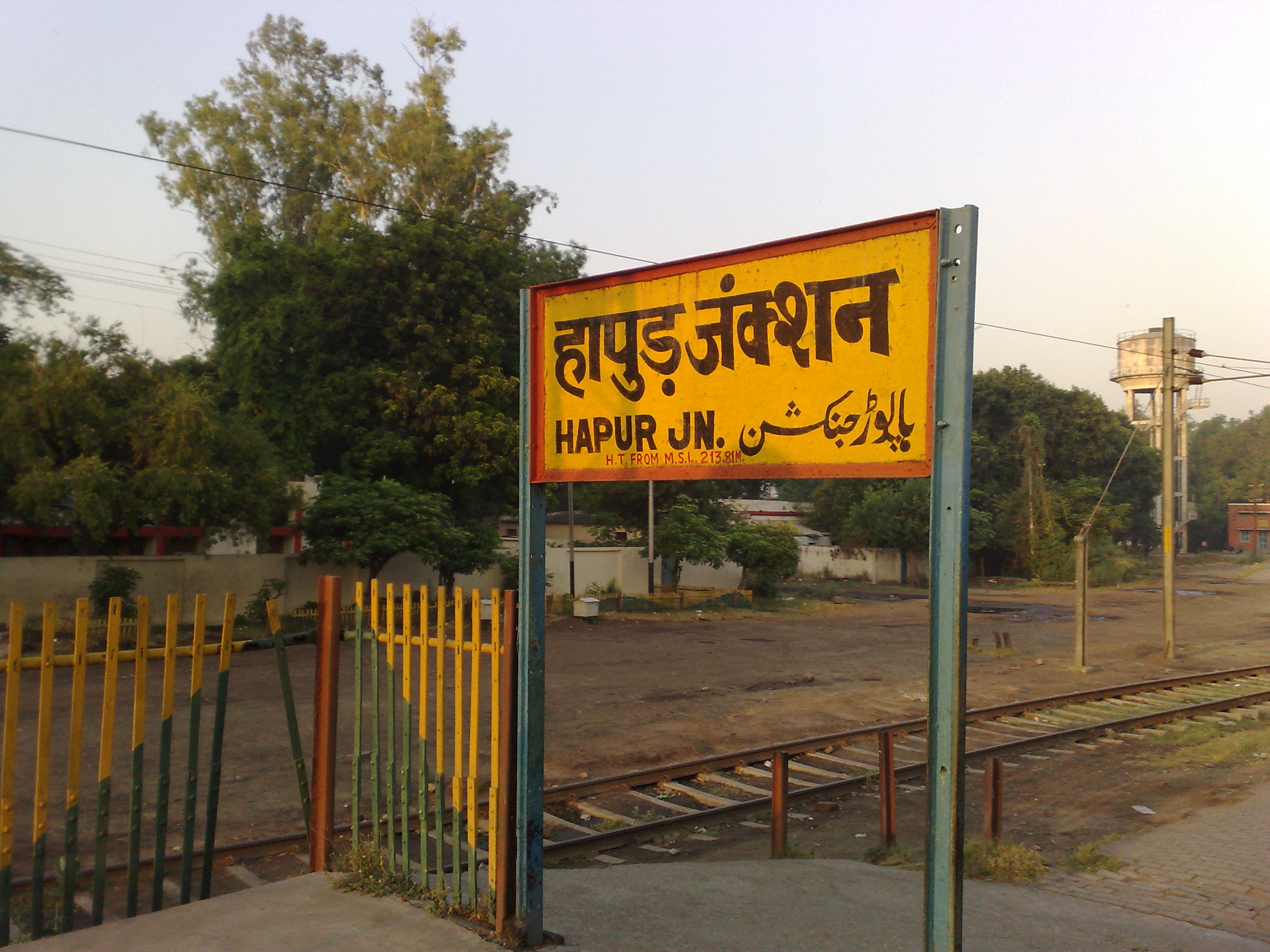|
Katharevousa
Katharevousa (, , literally "purifying anguage) is a conservative form of the Modern Greek language conceived in the late 18th century as both a literary language and a compromise between Ancient Greek and the contemporary vernacular, Demotic Greek. Originally, it was widely used for both literary and official purposes, though sparingly in daily language. In the 20th century, it was increasingly adopted for official and formal purposes, until minister of education Georgios Rallis made Demotic Greek the official language of Greece in 1976, and in 1982 Prime Minister Andreas Papandreou abolished the polytonic system of writing for both Demotic and Katharevousa. Katharevousa was conceived by the intellectual and revolutionary leader Adamantios Korais (1748–1833). A graduate of the University of Montpellier, Korais spent most of his life as an expatriate in Paris. As a classical scholar credited with both laying the foundations of Modern Greek literature and a major figure in ... [...More Info...] [...Related Items...] OR: [Wikipedia] [Google] [Baidu] |
Greek Language Question
The Greek language question (, ) was a dispute about whether the vernacular of the Greek people (Demotic Greek) or a cultivated literary language based on Ancient Greek (Katharevousa) should be the prevailing language of the people and government of Greece. It was a highly controversial topic in the 19th and 20th centuries, and was finally resolved in 1976 when Demotic was made the official language. The language phenomenon in question, which also occurs elsewhere in the world, is called diglossia. Linguistic background While Demotic was the vernacular of the Greeks, Katharevousa was an archaic and formal variant that was pronounced like Modern Greek, but it adopted both lexical and morphological features of Ancient Greek that the spoken language had lost over time. Examples: *Morphological features: Strict Katharevousa used the ancient dative case, many participles and various additional tenses and conjugational patterns of verbs. *Phonological features: Katharevousa contained ... [...More Info...] [...Related Items...] OR: [Wikipedia] [Google] [Baidu] |
Demotic Greek
Demotic Greek (, , , ) is the standard spoken language of Greece in modern times and, since the resolution of the Greek language question in 1976, the official language of Greece. "Demotic Greek" (with a capital D) contrasts with the conservative Katharevousa, which was used in formal settings, during the same period. In that context, Demotic Greek describes the specific non-standardized vernacular forms of Greek used by the vast majority of Greeks during the 19th and 20th centuries. As is typical of diglossic situations, Katharevousa and Demotic complemented and influenced each other. Over time, Demotic became standardized. In 1976, it was made the official language of Greece. It continued to evolve and is now called Standard Modern Greek. The term "demotic Greek" (with a minuscule d) also refers to any variety of the Greek language which has evolved naturally from Ancient Greek and is popularly spoken. Basic features Demotic Greek differs in a few ways from Ancient Greek ... [...More Info...] [...Related Items...] OR: [Wikipedia] [Google] [Baidu] |
Modern Greek
Modern Greek (, or , ), generally referred to by speakers simply as Greek (, ), refers collectively to the dialects of the Greek language spoken in the modern era, including the official standardized form of the language sometimes referred to as Varieties of Modern Greek#Standard Modern Greek, Standard Modern Greek. The end of the Medieval Greek period and the beginning of Modern Greek is often symbolically assigned to the fall of the Byzantine Empire in 1453, even though that date marks no clear linguistic boundary and many characteristic features of the modern language arose centuries earlier, having begun around the fourth century AD. During most of the Modern Greek period, the language existed in a situation of diglossia, with regional spoken dialects existing side by side with learned, more archaic written forms, as with the vernacular and learned varieties (''Dimotiki'' and ''Katharevousa'') that co-existed in Greece throughout much of the 19th and 20th centuries. Variet ... [...More Info...] [...Related Items...] OR: [Wikipedia] [Google] [Baidu] |
Diglossia
In linguistics, diglossia ( , ) is where two dialects or languages are used (in fairly strict compartmentalization) by a single language community. In addition to the community's everyday or vernacular language variety (labeled "L" or "low" variety), a second, highly codified lect (labeled "H" or "high") is used in certain situations such as literature, formal education, or other specific settings, but not used normally for ordinary conversation. The H variety may have no native speakers within the community. In cases of three dialects, the term triglossia is used. When referring to two writing systems coexisting for a single language, the term digraphia is used. The high variety may be an older stage of the same language (as in medieval Europe, where Latin (H) remained in formal use even as colloquial speech (L) diverged), an unrelated language, or a distinct yet closely related present-day dialect (as in northern India and Pakistan, where Hindustani (L) is used alongs ... [...More Info...] [...Related Items...] OR: [Wikipedia] [Google] [Baidu] |
Literary Language
Literary language is the Register (sociolinguistics), register of a language used when writing in a formal, academic writing, academic, or particularly polite tone; when speaking or writing in such a tone, it can also be known as formal language. It may be the Standard language, standardized variety of a language. It can sometimes differ noticeably from the various spoken language, spoken Variety (linguistics), lects, but the difference between literary and non-literary forms is greater in some languages than in others. If there is a strong divergence between a written form and the spoken vernacular, the language is said to exhibit diglossia. The understanding of the term differs from one linguistic tradition to another and is dependent on the terminological conventions adopted. Literary English For much of its history, there has been a distinction in the English language between an elevated literary language (written) and a colloquialism, colloquial or vernacular language (sp ... [...More Info...] [...Related Items...] OR: [Wikipedia] [Google] [Baidu] |
Linguistic Purism
Linguistic purism or linguistic protectionism is a concept with two common meanings: one with respect to foreign languages and the other with respect to the internal variants of a language (dialects). The first meaning is the historical trend of the users of a language desiring to conserve intact the language's lexical structure of word family, word families, in opposition to foreign influence which are considered 'impure'. The second meaning is the linguistic prescription, prescriptive practice of determining and recognizing one linguistic variety (linguistics), variety (dialect) as being purer or of intrinsically higher quality than other related varieties. The perceived or actual decline identified by the purists may take the form of a change of vocabulary, syncretism (linguistics), syncretism of grammatical elements, or loanwords. The unwanted similarity is often with a neighboring language the speakers of which are culturally or politically dominant. The ideal may invoke ... [...More Info...] [...Related Items...] OR: [Wikipedia] [Google] [Baidu] |
Greek Enlightenment
The Modern Greek Enlightenment (also known as the Neo-Hellenic Enlightenment; , ''Diafotismós'' / , ''Neoellinikós Diafotismós'') was the Greek expression of the Age of Enlightenment, characterized by an intellectual and philosophical movement within the Greek community. At this time, many Greeks were dispersed across the Ottoman Empire, with some residing on the Ionian Islands, in Venice, and other parts of Italy. Leonardos Philaras, one of the early advocates for Greek independence, played a significant role before the movement truly gained momentum following his death. Throughout the Ottoman Empire, Greeks frequently participated in uprisings. Many Greeks living in Venice fought for the Venetian Empire against the Ottomans. Notable Greek painters in Venice who took part in these conflicts included Victor (painter), Philotheos Skoufos, and Panagiotis Doxaras. During the Modern Greek Enlightenment, Greek painting underwent a significant transformation. The traditional ... [...More Info...] [...Related Items...] OR: [Wikipedia] [Google] [Baidu] |
Great Greek Encyclopedia
The ''Great Greek Encyclopedia'' (Greek language, Greek: ''Μεγάλη Ελληνική Εγκυκλοπαίδεια'') is a general knowledge Modern Greek language, Greek-language encyclopedia, printed initially between 1926 and 1934. The encyclopedia was founded in 1926 by Pavlos Drandakis (1896–1945) after the model of ''Encyclopædia Britannica''. He was helped by many well-known and qualified contributors and the result was deemed to be excellent. Iraklis Apostolidis was the editor-in-chief of the encyclopedia, while approximately 700 people contributed in the writing of the encyclopedia. Pyrsos, Pyrsos, Ltd. was commissioned with printing the encyclopedia and its printing began on March 1, 1926. It was issued approximately at the same time as another Greek encyclopedia of the time, the Eleftheroudakis Encyclopedic Dictionary. As the target group of the two encyclopedias was the same, in order to decrease the financial strain of the readers, the two encyclopedias were circ ... [...More Info...] [...Related Items...] OR: [Wikipedia] [Google] [Baidu] |
Ancient Greek
Ancient Greek (, ; ) includes the forms of the Greek language used in ancient Greece and the classical antiquity, ancient world from around 1500 BC to 300 BC. It is often roughly divided into the following periods: Mycenaean Greek (), Greek Dark Ages, Dark Ages (), the Archaic Greece, Archaic or Homeric Greek, Homeric period (), and the Classical Greece, Classical period (). Ancient Greek was the language of Homer and of fifth-century Athens, fifth-century Athenian historians, playwrights, and Ancient Greek philosophy, philosophers. It has contributed many words to English vocabulary and has been a standard subject of study in educational institutions of the Western world since the Renaissance. This article primarily contains information about the Homeric Greek, Epic and Classical periods of the language, which are the best-attested periods and considered most typical of Ancient Greek. From the Hellenistic period (), Ancient Greek was followed by Koine Greek, which is regar ... [...More Info...] [...Related Items...] OR: [Wikipedia] [Google] [Baidu] |
Georgios Rallis
Georgios Ioannou Rallis (; 26 December 1918 – 15 March 2006), anglicised to George Rallis, was a Greek conservative politician and Prime Minister of Greece from 1980 to 1981. Ancestors in politics Georgios was descended from the old, noble and political Rallis family. Alexandros Rallis, born in 1760, was a prominent Phanariote (Greek from Constantinople). In 1849 his son became Chief Justice of the Greek Supreme Court. Dimitrios Rallis, paternal grandfather of Georgios Rallis, served as Prime Minister of Greece for five separate short periods in 1897, 1903, 1905, 1909 and 1921. Dimitrios's son and Georgios's father, Ioannis Rallis, was a collaborationist Prime Minister from 1943 to 1944, during the German occupation. After the liberation of Greece he was sentenced to life imprisonment for collaboration and died in jail in 1946. His maternal grandfather, Georgios Theotokis, was four times Prime Minister of Greece, between 1901 and 1907. Early life Georgios Rallis w ... [...More Info...] [...Related Items...] OR: [Wikipedia] [Google] [Baidu] |
Greek Diacritics
Greek orthography has used a variety of diacritics starting in the Hellenistic period. The more complex polytonic orthography (), which includes five diacritics, notates Ancient Greek phonology. The simpler monotonic orthography (), introduced in 1982, corresponds to Modern Greek phonology, and requires only two diacritics. Polytonic orthography () is the standard system for Ancient Greek and Medieval Greek and includes: * acute accent () * circumflex accent () * grave accent (); these 3 accents indicate different kinds of pitch accent * rough breathing () indicates the presence of the sound before a letter * smooth breathing () indicates the absence of . Since in Modern Greek the pitch accent has been replaced by a stress (linguistics), dynamic accent (stress), and was lost, most polytonic diacritics have no phonetic significance, and merely reveal the underlying Ancient Greek etymology. Monotonic orthography () is the standard system for Modern Greek. It retains two dia ... [...More Info...] [...Related Items...] OR: [Wikipedia] [Google] [Baidu] |





